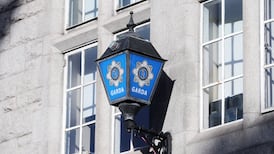Another Life: Ethna's dad used to come down from Cuilcagh Mountain with a sooty shotgun and bulging gamebag.
"Grouse again!" she muttered at the dinner table. She remembers the house's gate-pillars draped with feathery corpses, and grouse being parcelled up for dispatch to relatives in the cities. But that was rural Cavan in the 1940s, before the hillsides were claimed for forestry and EU-subsidised sheep got to work on the heather.
Today, on the high moors and bogs of Ireland, the numbers of cock grouse staking out their territories in autumn are dwindling. In Northern Ireland a wide-ranging field survey, using tapes of grouse-calls to lure responses, found just 202 pairs in 2004. The current guesstimate for Ireland ranges between 1,000 and 5,000 breeding pairs.
The native red grouse, a bird that stays put where it can, needs young heather to feed on, and old heather to hide its nests and give it cover from birds of prey. On the drier mountains of the east - notably the Wicklows - there is most heather and the highest density of grouse. In the wetter west, neither heather nor grouse were ever as plentiful, but the catastrophic overgrazing at the end of the last century has hastened the bird's decline: grouse are rare where there is less than 20 per cent cover.
Ireland's biggest Special Protection Area for birds is the 25,000 hectares of mountain and bog in the Owenduff-Nephin Beg area of Co Mayo, much of it protected in a new national park. In 2002, Ireland was condemned by the European Court of Justice for failing to control the overgrazing there - an infringement case that still continues. Because years of paying farmers to reduce their flocks had failed to bring back the heather, sheep are now banned from the Owenduff-Nephin commonages for five months of the year.
But just how special, in fact, is Ireland's red grouse? Its "parent" species, the willow grouse, Lagopus lagopus, lives on tundra from Canada to Russia and turns white in winter. The grouse of Britain - Lagopus lagopus scoticus - does not change, nor does Ireland's. But our red grouse is seen by many as paler and yellower than Britain's, perhaps to blend in with a higher proportion of grasses and sedges in our moorland habitats. Is it, in fact, a separate subspecies of willow grouse, deserving hibernicus at the end of its name? A good many ornithologists have thought so.
Considering the avalanche of wildlife extinctions in process around the world, this may all seem rather academic. But when a species is in trouble, its genes can be important to its prospects for recovery. Along with the first accurate, national census of our grouse comes a new scrutiny of their DNA.
A Northern Ireland study of DNA sequences in British and Irish grouse, published last spring, found no evidence of genetic difference between the two populations. There were some limitations to the study, and its more significant finding was, perhaps, the limited genetic variation within the Irish grouse population. This casts a shadow of inbreeding and potential extinction.
Now, a team at University College Dublin will further pursue both the national genetic credentials of the Irish grouse and its wider regional diversity. If there is a distinctively Irish gene pool, it might, indeed, be found at its purest among the hard-pressed survivors of the western hills.
The project is led by Dr Barry McMahon, working with phylogeneticist Dr Emma Teeling, and what they need are lots of fresh samples of grouse feathers (the Northern Ireland study had only 36 fresh samples). And since September is the one month when the bird can be shot, they are appealing to hunters to send five to 10 feathers from any individual grouse, with a note of the bird's location.
With conservation in view, shooting any of the red-listed, endangered grouse may seem an odd way of proceeding. But, as with most birds, early autumn is the time of greatest abundance, with a "surplus" doomed to die anyway of predation, disease or winter starvation. With grouse, in particular, the strongest birds from one family group tend to mate with the strongest from another, leaving the rest to die out (or be shot). It is also argued that shooting thins out the older, slower and sterile pairs (grouse are monogamous) that are still holding on to prime territories. All this supposes, of course, that the right birds get shot.
The coming census, starting later this autumn, is a joint initiative between BirdWatch Ireland and the National Parks and Wildlife Service. Their field staff will need help, if only in reporting casual sightings of grouse. Sinead Cummins is the project officer (redgrouse@birdwatchireland.ie). The feathers go to Dr Barry J McMahon, School of Biology and Environmental Sciences, University College Dublin, Belfield, Dublin 4 (barry.mcmahon@ucd.ie).










